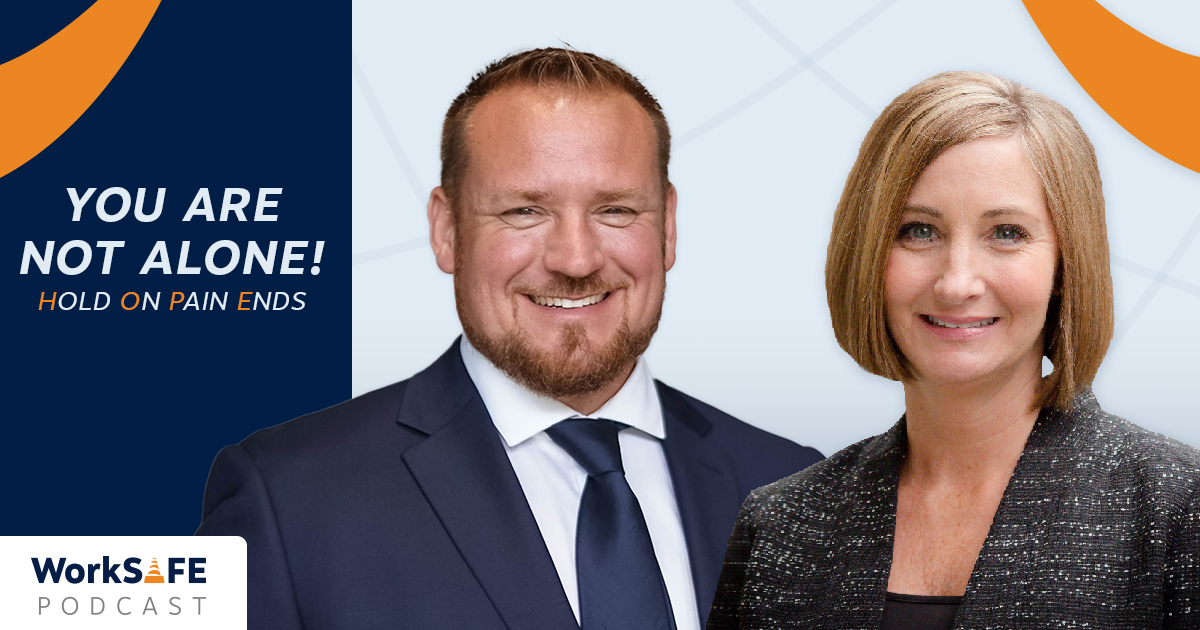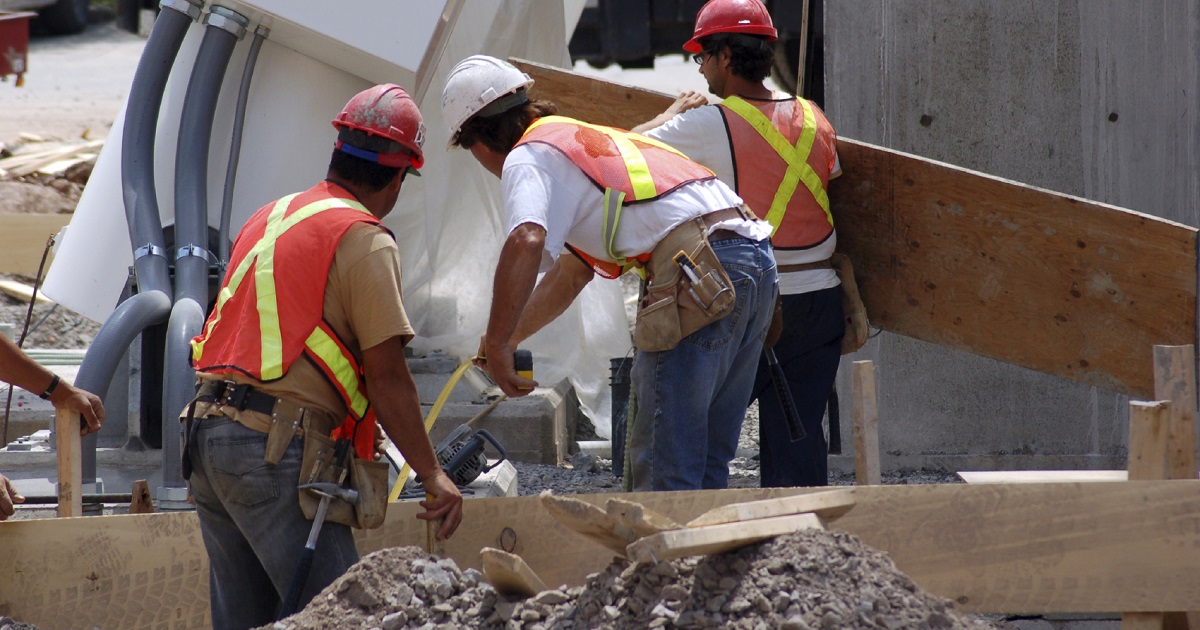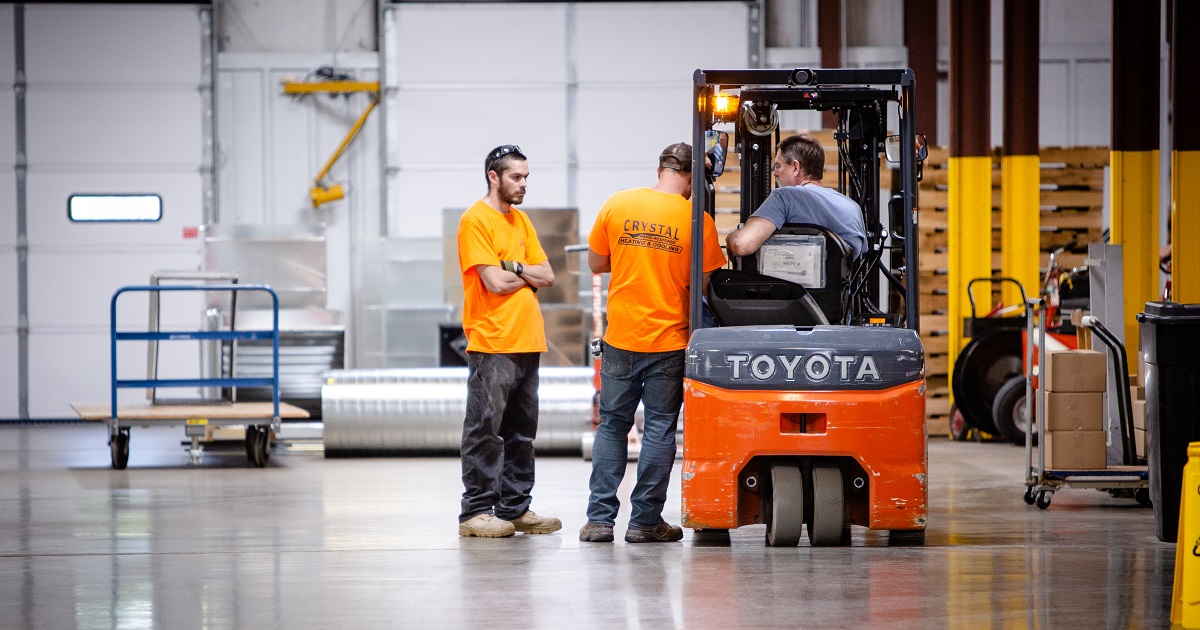Suicide is a growing problem in the construction industry. A “tough guy” culture dominates work environments. Many employees feel that injuries, mental health, and stress are weaknesses. They tend to deal with them quietly – if at all. As a result, drug and alcohol misuse becomes a common solution. The industry has the second-highest rate of suicide amongst all occupations in the U.S. Workers are struggling, and often feel they have nowhere to turn for help.
On this episode of the WorkSAFE Podcast, we sit down with Brandon Anderson. He is the Vice President of the Missouri chapter of the Associated General Contractors of America (AGCMO). Anderson has over 24 years of experience in construction, and 15 years as lead safety instructor at the Missouri Department of Transportation (MoDOT). In 2019, he joined suicide prevention efforts at AGCMO, and is passionate about connecting construction workers – and their employers – with the help they need.

First, we’ll discuss about the reasons behind the mental health crisis in the industry. Then, we’ll talk about why employers need to address mental health in the workplace. Finally, we’ll share resources to help businesses start supporting employee mental health.
Listen to this episode on the WorkSAFE Podcast, or read the show notes below.
“Suck it up, buttercup”: 3 reasons mental health suffers in construction
Construction is a male-dominated industry. Men from all walks of life – and a far fewer number of women – come together on job sites. “There’s this perception, or persona, that you’re larger than life, that you’re a tough guy, using tools – you’re running heavy equipment,” Anderson shared. “You’re building stuff, you’re building bridges, and buildings, and structures. And we don’t have time for feelings.” This culture creates an environment that harms mental health in more ways than one.
The macho mentality
A “tough guy, macho man” mentality hangs over the industry like a dark cloud. Several generations of employees often work together. As a result, workers pass around the idea of what construction worker “should” be. Taking time to take care of yourself isn’t popular. ‘Hurry up and get the job done’, or ‘Suck it up, buttercup’ are common comments. And they don’t help those who are struggling. “You don’t have time to be stressed, you don’t have time to be stuck in your head,” Anderson explained. The goal is to just keep going – no matter what.
Making sacrifices
A career in construction can be demanding. “It’s not your nine to five, 40 hours a week,” Anderson shared. Some employees work 70-80 hours per week, seven days a week. Further, many jobs are seasonal. Traveling employees sacrifice a lot. Family, friends, and support systems can be out of reach for weeks at a time.
Problematic solutions to pain
A construction employee’s most important tool is their body. Injuries and pain can occur with heavy physical work. Many believe reporting an injury will follow them for the rest of their career. They also worry it will keep them from getting the next job.
Consequently, many workers don’t share when they’ve been hurt. They turn to other solutions instead. Some rely on drinking with their teams after work – an employee tradition that’s built up over the years. Others take a regular schedule of pain medication.
A few go to the doctor on their own. They sometimes receive strong opioids to deal with the pain. Without proper supervision, pain management turns into a problem. “These individuals are impacted by that the most,” Anderson explained. “They start using these opioids and these different pain killers to get well, and next thing you know they’re addicted.”

Out of focus: The safety risks of mental health crises
A mental health crisis doesn’t just affect the worker themselves. It also puts their teammates at risk. Those struggling with mental illness can appear different. They might be unfocused, or down. Maybe they are easily irritated or upset, or get into disagreements often. This behavior can be dangerous on a worksite.
“If you’re not mentally in the game, if you will, and focused, and you’re distracted, you’re putting yourself and everyone else at risk,” Anderson said. He’s seen how this in his experience at MODOT. For example, some construction employees work along highways. Their location puts them at constant risk. Flaggers, who direct traffic, often need to stand in the road. If they become distracted for a just a moment, then an accident can happen.
The same applies to construction employees on all types of job sites. Crush injuries are a risk for unfocused ironworkers setting beams. A distracted worker running a circular saw may make an irreversible mistake. Injuries happen in a single moment. But they may take months, or even years, to recover from. Anderson recommends that workers just be truthful. “Be honest with yourself. Be honest with your foreman or superintendent,” he shared. If you can’t do the job, then don’t. “What’s your life worth?,” he asked.
Suicide Prevention Measures
Employers are key to making changes in any workplace. Workers who are considering suicide are not always obvious. Further, they are not beyond help. Suicide affects family, friends, and coworkers. One day, their favorite person is simply no longer there. If you’ve noticed something unusual about an employee’s behavior or attitude, then it isn’t too late step in.
Employee assistance programs
Employee assistance programs (EAPs) are a great way for workers to seek anonymous help. Some larger companies have them. Similar resources are sometimes provided by unions. However, they just aren’t used enough.
Employees may have doubts about using an EAP. “There’s this thought process that someone is going to know,” Anderson suggested. But EAPs are meant to be confidential. If someone decides to use it, then the help they receive isn’t linked to their name. Make sure employees know about any available EAPs – and how to use them.
Safety meetings
Talking about mental health helps normalize the topic. The “macho mentality” leads employees to think they don’t need help from a doctor or mental health professional. It’s up to managers and leaders to start discussions in the workplace. Anderson recommends Tool Box Talks as a great place to start. Some cover safety topics. While those are important, mental health can be worked into the mix. AGCMO offers a selection of twelve “Mental Health Monday” Tool Box Talks.
“The encouragement is the first Monday of the month – or quite frankly any Monday – rather than talk about safety glasses again, or slips, trips, and falls in a Tool Box Talk, let’s talk about mental health.”
Empathy
Suicide is an action that can’t be undone. Anderson know that when it happens, many people ask themselves the same questions. Is there something could I have done? Is there something I could have said? For employers, the answer is yes. Sitting down to talk, or even offering a day off, are simple actions that can make a big difference. However, a leader’s role doesn’t stop there.
Talking to an employee can reveal red flags. “Somebody needs to call a time-out,” Anderson instructed. Leaders need to make a decision. Did the employee just need to vent? Or is something more serious going on? First, guide them towards the resources or support they need. Then, follow up with them after. Just talking about it once isn’t enough.

How do I know if someone needs help?
Mental health is different for everyone. No two people will have the same experience. And every employee is allowed to have an off day. Maybe the bus was late, or they got a flat tire, or they simply just had a late night. But Anderson points to some familiar signs that there may be a deeper problem:
- Lateness and absence. Is the employee late often? Do they not show up for work or assigned shifts throughout the week?
- Change in attitude. Has the employee’s attitude changed? Are they upset, angry, or irritable?
- Poor personal hygiene. Has the employee stopped taking care of themselves? Avoiding tasks like brushing hair or teeth, wearing clean clothes, or other unusual behavior?
Building a trauma-informed workplace can be key to understanding changes like these. Anderson also recommends mental health first aid training. This allows staff to know when to step in.
Suicide prevention has always been an important topic. However, COVID-19 has added grief, isolation, and even more stress to the mix. Resources are available to businesses ready to take the first step. Anderson recommends checking out local universities, who often have mental health research programs, and community resources. He helps lead the Pledge of Hope Campaign, which offers free resources for both employers and employees. For immediate help, the National Suicide Prevention Lifeline is available 24 hours a day at 800-273-8255. “We can’t not do anything,” he finished. Employers have the power to make a difference.
For free safety posters, sample policies, and safety toolkits, visit our Resource Library. Then, learn how to lead a workplace with empathy and empowerment in this WorkSAFE Podcast episode.